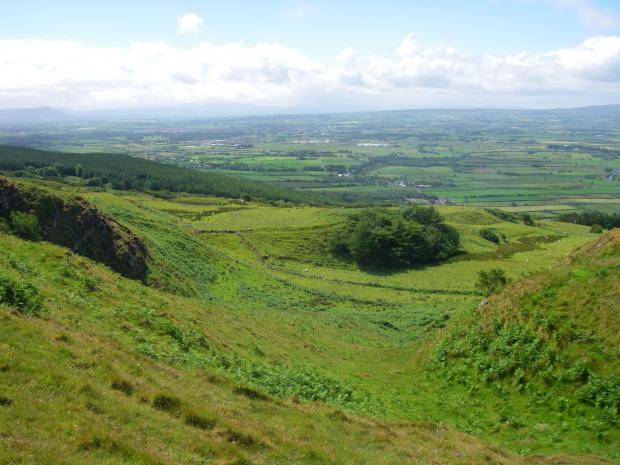
The area is of special scientific interest because of its geological and geomorphological features, its cliff vegetation, grasslands (in particular herb-rich calcicolous grassland), bryophyte-rich scree, rare plants, bryophytes and fungi. Binevenagh is an important outcrop of basalt, providing a fuller understanding of the development and age of the Antrim Lava Group as a whole. The well-defined flow units and pahoehoe surfaces are among the best examples seen anywhere within the basalt plateau. Mass movement during late- or post-glacial times has resulted in large slipped masses of basalt.
The cliffs at Binevenagh have a unique assemblage of arctic-alpine plants and bryophytes, including mountain avens, purple saxifrage and Tortula princeps, a vulnerable moss typical of slightly base-rich conditions on crumbly basalt.
The grassland below the cliff is typically dominated by the fescue species and common bent with herbs such as heath bedstraw and tormentil. These grasslands are nationally important for fungi, particularly waxcaps (Hygrocybe). Both meadow and scarlet waxcaps regularly fruit in large numbers during late autumn. Dry, calcareous grassland also occurs with fine-leaved grasses, sedges and herbs dominating the sward. Wild thyme, eyebright and harebell are all frequent, with species such as field gentian and thyme broomrape more notable.
Related articles
- ASSI Guidance for Public Bodies/Competent Authorities
- Coastal Areas of Special Scientific Interest
- Conservation Management Plans (CMPs)
- European Marine Sites - Marine Special Areas of Conservation and Special Protection Areas
- Introduction to Conservation Management Plans (CMPs) for Northern Ireland’s Special Areas of Conservation
- Marine Conservation Zones
- Marine Protected Areas
- Marine Ramsar sites
- Special Areas of Conservation
- Special Areas of Conservation for Harbour porpoise
- Special Protection Areas
